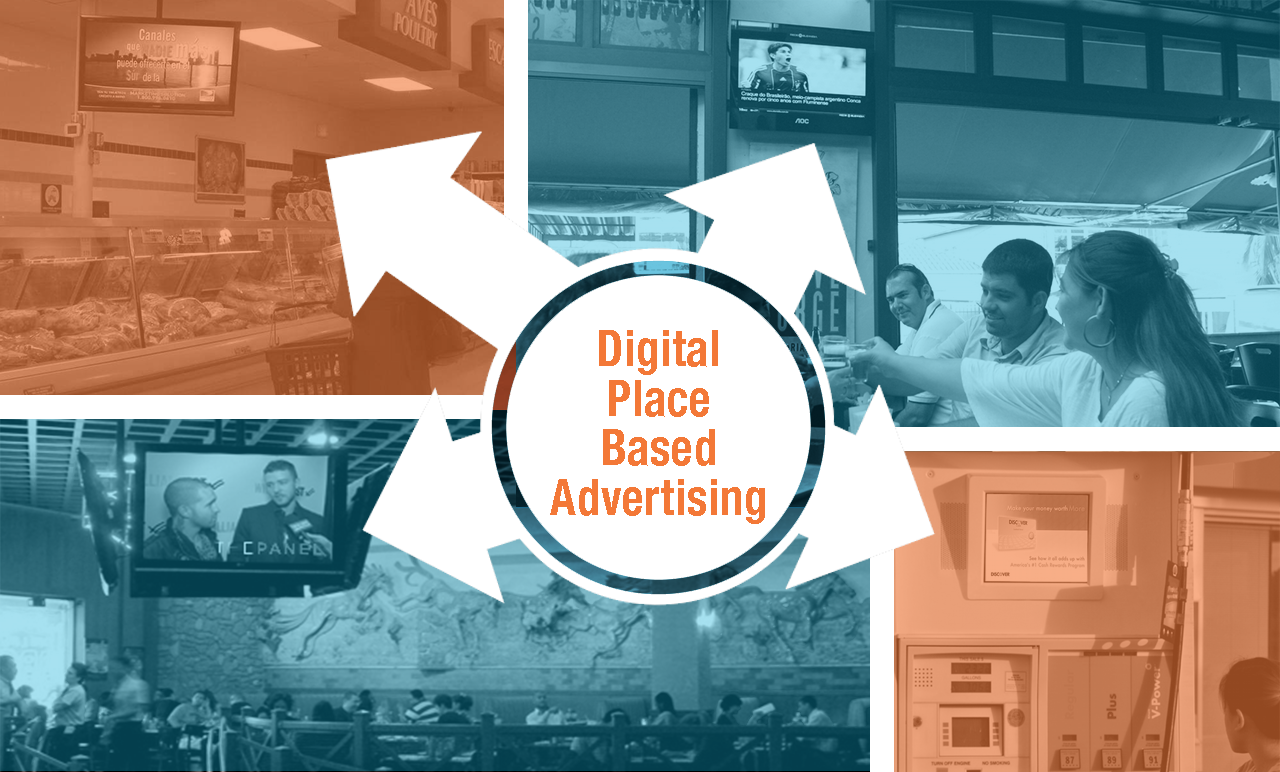
Digital place-based (DPB) advertising is an intriguing OOH format. DPB is becoming increasingly effective as advertisers attempt to adapt to the fast-paced lifestyles of today. This post will examine the unique value digital place-based advertising brings to the table, and explore some of the opportunities associated with this up-and-coming medium.
What is Digital Place Based Advertising?
Place-based marketing is any marketing placed in a specific location, or type of environment. Digital Place-Based advertising follows essentially the same definition but uses digital screens, as DPB is a subset of the larger category that is Digital-Out-of-Home. DPB delivers its messaging through content-based networks displayed on internet-enabled screens, capitalizing on context and utilizing location to target consumers. These networks distribute location-specific content designed to capture consumers attention. They then proceed to follow that content up with targeted advertisements.
What Unique Value Does DPB Provide?
Now that there is an understanding of what Digital Place-Based advertising is, the next question to address is, “Why it is becoming so popular?” A study conducted by the Digital Place Based Advertising Association (DPAA) revealed that there are five primary benefits that explain DPB’s newfound popularity.
Its Ability to Reach Target Demographics: DPB makes it easy to target certain audiences. For example, if the goal is to reach health and wellness-conscious individuals, using a DPB network that is broadcasted in gyms will make targeting that audience incredibly simple.
It Can Connect With Consumers on their Path to Purchase: Digital place-based networks often distribute content in locations where consumers make buying decisions. For instance, a DPB network that plays in a grocery store might advertise the products that reside near the checkout lanes. These ads located near the point of decision making can influence a consumer’s thoughts, nudge them towards a desired behavior, and kickstart the buying process.
Target Consumers by Contextual Relevance: Using DPB allows advertisers to remain contextually relevant. As consumers move through the buying process their wants and needs change. Someone who is just walking into a store is going to react to ads in a different way than someone who is checking out. DPB uses location to capitalize on the different stages of the buying process, making it an invaluable tool that many marketers are only beginning to realize the full potential of.
Geotarget by DMA: DPB also allows marketers to advertise by DMAs, or Designated Market Areas. DMA regions are defined by Nielsen as “a group of counties that form an exclusive geographic area in which the home market television stations hold a dominance of total hours viewed. Marketing through DPB to capitalize on specific DMAs affords advertisers greater insight into the desires of consumers and, ultimately, allows them to create more powerful campaigns.
Access Hyper-Local Geotargeting: Geo-targeting hyper-locally allows advertisers to tap into the wants, needs, and concerns most prevalent in certain areas. This makes DPB ads more meaningful, and ultimately more impactful.
These various points illustrate the five factors that make DPB the powerful OOH format it is. DPB allows advertisers to be agile when conducting business. It enables marketers to craft powerful campaigns and deliver hyper-targeted messages to specific people, at specific times, in specific locations.
Now that you’ve spent some time learning about Digital Place-Based advertising head on over to DOmedia, host of the largest database of OOH vendors in the US, and get down with some DPB of your own!




